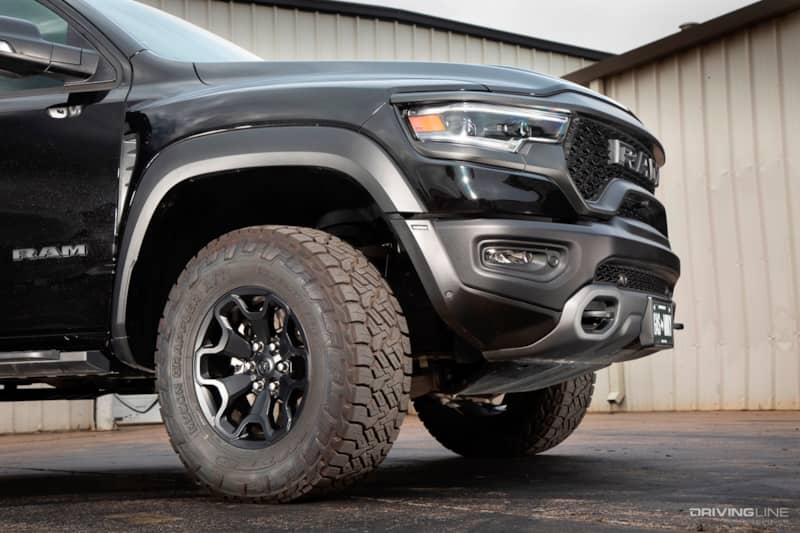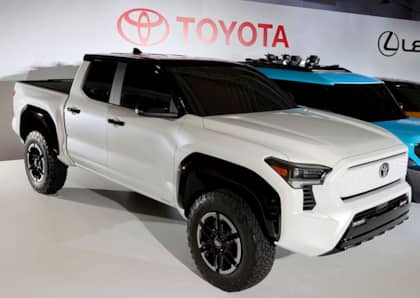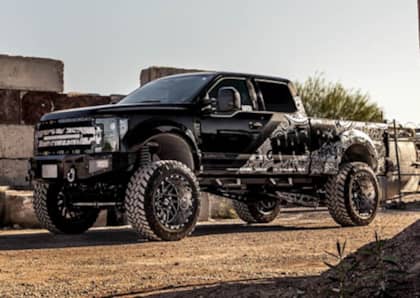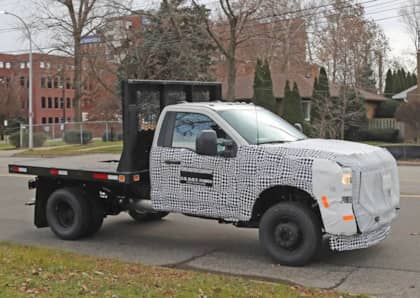What The UAW Strike Means For Ford, GM, Ram AND You
The recent UAW strike was remarkable in many ways. Not only did it affect all of the Big Three simultaneously (Ford, GM and Stellantis—parent company of Ram Trucks), but it proved to be the longest-lasting auto worker strike thus far in the 21st century. In the end, through targeted assembly plant shutdowns, the automakers caved and the UAW prevailed. Precedent-setting concessions were made, namely in the form of higher wages. But UAW workers also achieved something significant: job security in an all-EV future. Previously, automakers had planned to outsource the majority of their EV programs. If that was allowed to stand, current ICE employees could’ve easily been out of the job within the next 10 to 12 years.

It lasted just over six weeks, but the repercussions of the UAW strike will be felt for months, if not years. In the short-term, dealerships and independent shops alike are going to continue to experience parts shortages and unavailability. And with a hiccup in new vehicle production, price hikes may be in store for both new and used vehicles. Further into the future, there are legitimate concerns, predominantly how all of this will affect vehicle quality. Given the fact that the new UAW wages tighten profit margins even further, what will the quality of future Ford, GM and Sellantis-built cars, trucks and SUVs look like? Buckle up, because we’re going to cover a lot of ground this time. Let’s dig in.
Short-Term
The Price Of New Vehicles

Let’s start with the burning question of the moment. Will the price of new vehicles skyrocket (again) due to the UAW strike? While consumers could see a slight increase in certain regions, the relatively short duration of the strike likely won’t impact the cost of a new domestic very much. To be sure, there will be a lull in new vehicle deliveries for at least two months, but dealers—who were watching the coming storm back in August—began buying more vehicles from The Big Three in anticipation of a pending strike. Additionally, non-union automakers (i.e. everyone except Ford, GM and Stellantis) didn’t go on strike, which means they didn’t face shortages that might cause them to raise their MSRP’s. It would be unwise for either of The Big Three to raise prices when their competition isn’t.
The Price Of Used Vehicles

Naturally, the next question is: will the price of used vehicles go up? Don’t be so sure of this, either. As we alluded to above, although the strike shut down key assembly lines and even some vital parts suppliers, it wasn’t long enough to cause long-term production shortages. While the shutdowns didn’t do it any favors, the used car market has been a steady-burning dumpster fire for more than a year now. It’s doubtful prices could go much higher than they currently are—or could they? What will be most frustrating in the short-term for used vehicle owners is parts availability.
Temporary Inconveniences

While walkouts took place at some of the OEM’s largest production plants, it wasn’t just assembly lines that were affected. Between GM and Stellantis alone, 38 parts distribution centers were shut down during the strike. This means replacement parts may not be available in order to perform vehicle repairs, or even carry out regular maintenance procedures.

Nationwide, at dealerships and independent shops alike, repairs are being delayed for vehicles already parked in shops and new service requests aren’t being accepted due to unavailable parts. Once the distribution centers are firing on all cylinders again, the vehicle repair and support side should bounce back in a few months.
Long-Term
Lost Production

Now for the big numbers. During the strike, Ford produced 80,000 fewer vehicles than it normally would have. According to company CFO, John Lawler, Ford Motor Company lost roughly $1.3 billion in annual profit during the shutdowns. Without a doubt, the stoppage at Ford’s Kentucky Truck plant, its most profitable factory at $25 billion in annual revenue, played a large part in that colossal figure. Over at General Motors, losses in profit were estimated to be in the $800 million range. It’s unclear how many fewer vehicles were produced by GM, but during the strike of 2019 (a strike with a similar duration but that entailed different variables) the assembly of 165,000 units were stalled.
Lost Profits

It’s rumored that neither of The Big Three can recoup what was lost during the strike by simply raising the prices on its most highly profitable vehicles. The reason? We’re told it’s because these vehicles (primarily large pickups and SUVs) are already near the limit of what consumers will pay. We’re not sure if we believe that, but we do know you can easily spend $100,000 or more on a new Ford Super Duty these days, so the breaking point may be near. We also know that since the strike commenced, Ford and GM have either altered or pulled their 2023 profitability forecasts. They will both likely end up being a 10-digit figure short of their year-end goal(s).
Higher Wages May Change How The Big Three Conduct Business (And Build Cars)

No one can deny that the UAW won big in the strike, but how exactly will The Big Three pay the considerable wage increases they just agreed to? Because all UAW workers (temporary and permanent) will be paid substantially more now, each automaker will have to review (and likely alter) much of their costs and manufacturing processes in order to continue to be profitable. Does this mean corners will be cut on the quality of certain components? Are we on the cusp of a gradual downturn in the reliability, efficiency and refinement of Ford, GM and Stellantis products? We certainly hope not.
GM’s Ongoing Cost-Cutting May Accelerate Now

Following the historic deal with the UAW, GM is searching for a way to reduce $2 billion in fixed costs over the course of the next 2 years. It’s a search that’s been ongoing since before the strike, where salaried employee buyouts were rampant (i.e. non-union workers). But in order to reach their goal, cuts are going to have to be made at the production level. Again, does this mean lower quality vehicles are on the way? All of the Detroit Three are profit-centered manufacturers, but GM has made it very clear in recent years that profitability is king. “Profits over volume” is a common theme within the halls of the Renaissance Center.
The EV Angle (Is Huge)

Part of the new UAW contract forces The Big Three to find a place for union workers in their new (and in-development) electric vehicle operations. If the internal combustion engine (ICE) is really going away, the entire powertrain of the average vehicle will change—and that means different jobs for nearly everyone. Before the strike, each of The Big Three seemed convinced that outsourcing was the way to achieve its EV goals. The EV provision in the new UAW contract is vital for any UAW members’ future job security.
More From Driving Line
- As the ICE seemingly dies a slow death, let us remind you why we believe diesel-fired engines are here to stay.











